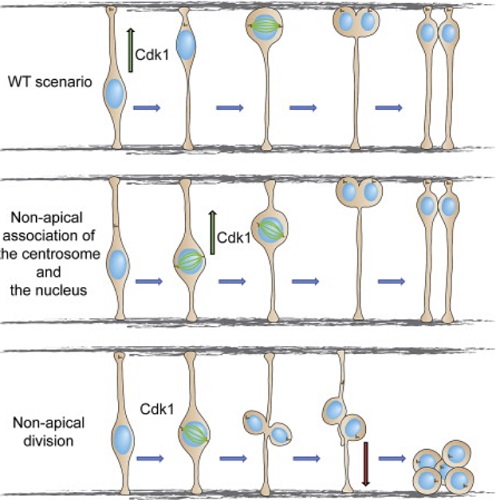Interkinetic nuclear migration is centrosome independent and ensures apical cell division to maintain tissue integrity.
Pseudostratified epithelia are widespread during animal development and feature elongated cells whose nuclei adopt various positions along the apicobasal cell axis. Before mitosis, nuclei migrate toward the apical surface, and subsequent divisions occur apically. So far, the exact purpose of this nuclear migration remained elusive. One hypothesis was that apical migration ensures that nuclei and centrosomes meet for mitosis. We here demonstrate that in zebrafish neuroepithelia apical nuclear migration occurs independently of centrosome position or integrity. It is a highly reproducible phenomenon linked to the cell cycle via CDK1 activity. We propose that the robustness of bringing nuclei apically for mitosis ensures that cells are capable of reintegrating into the epithelium after division. Nonapical divisions lead to cell delamination and formation of cell clusters that subsequently interfere with neuronal layering. Therefore, positioning divisions apically in pseudostratified neuroepithelia could serve to safeguard epithelial integrity and enable proper proliferation and maturation.

- Dev. Cell 2015 Jan 26;32(2):203-19
- 2015
- Cell Biology
- 25600237
- PubMed
Enabled by:
